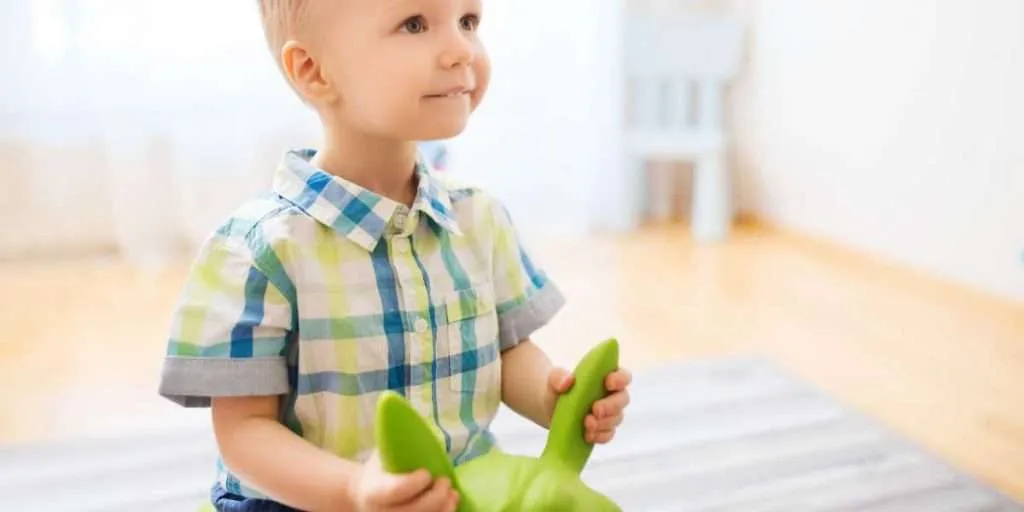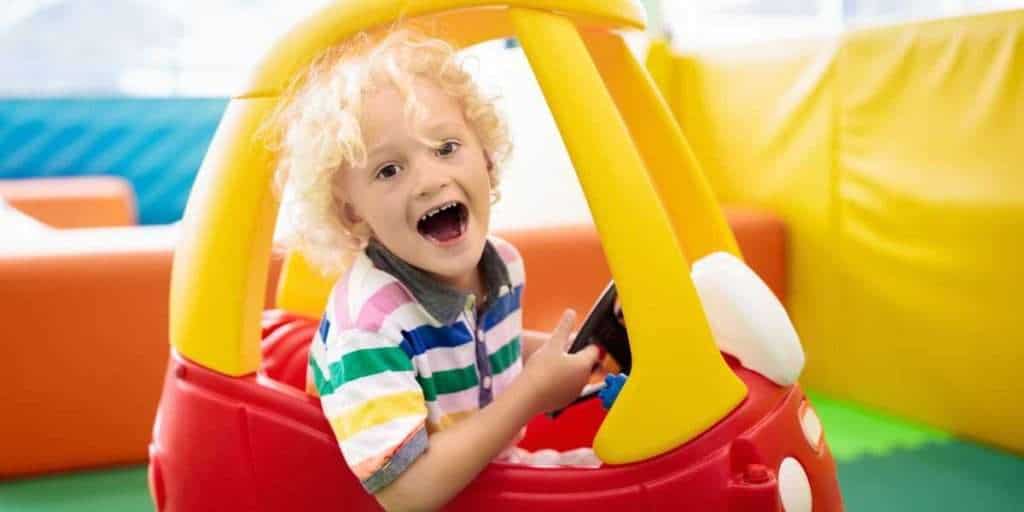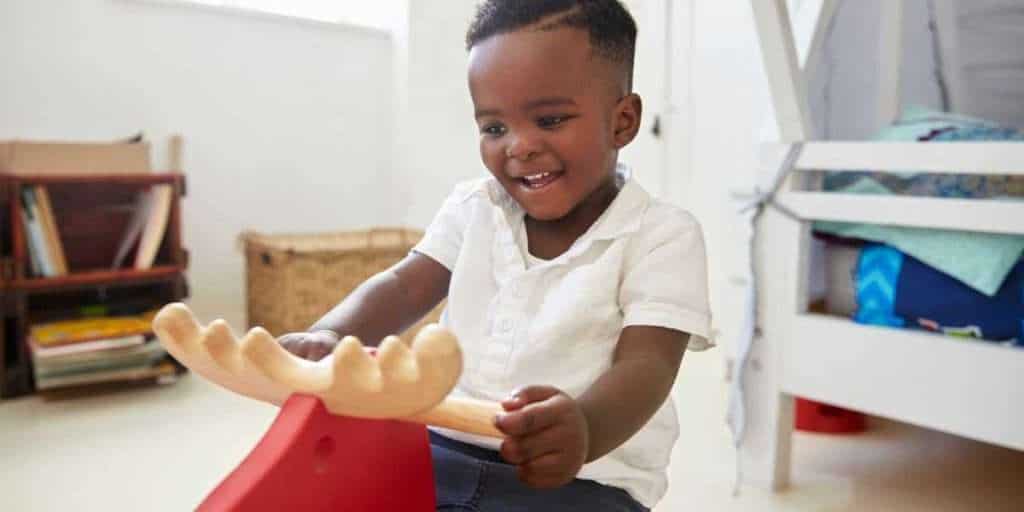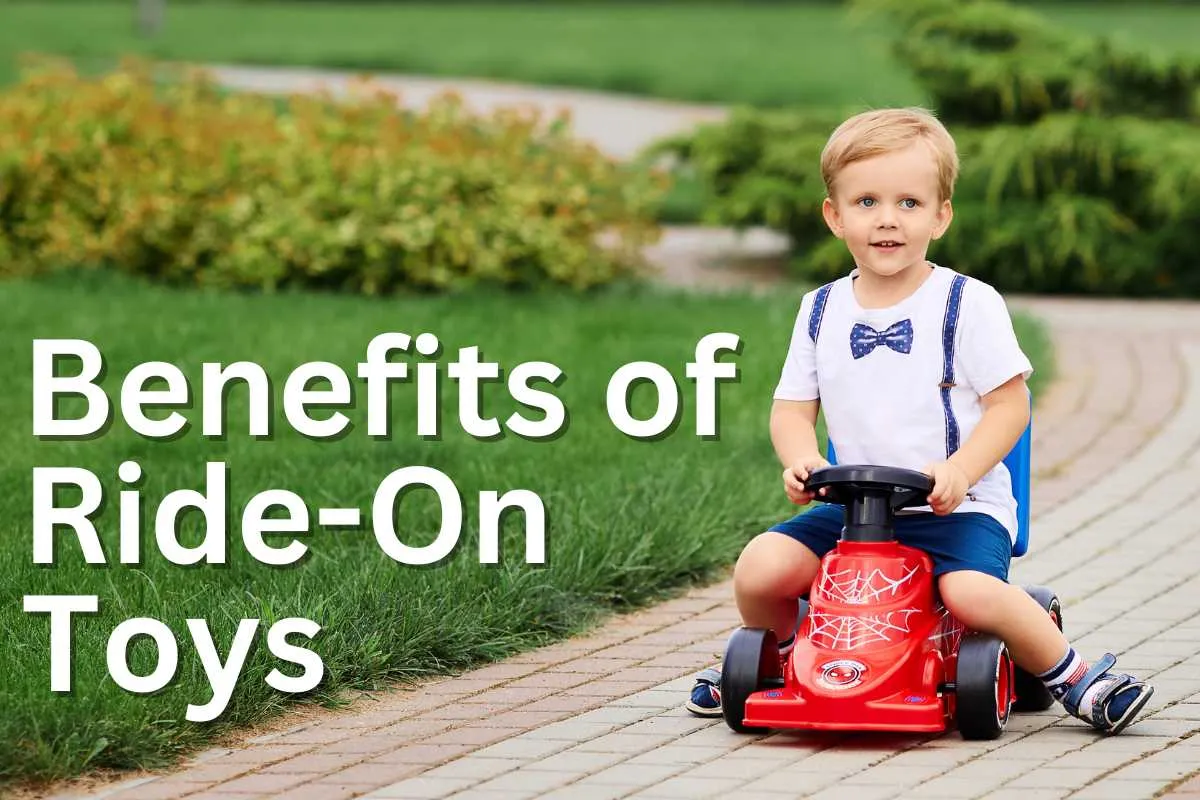Exploring the Benefits of Ride-On Toys takes us beyond the exhilarating thrill of motion. These toys are not merely about zooming around; they are pivotal tools in bolstering a child’s physical, cognitive, and social growth.
Ride-on toys, ranging from scooters to pedal cars, foster balance, coordination, and spatial awareness. They also stimulate imaginative play scenarios, promote independence, and provide opportunities for peer interaction during group play. This article will delve deep into the manifold advantages of ride-on toys, elucidating how they benefit kids in more ways than one.
Interested in understanding how ride-on toys can elevate your child’s developmental journey? Ride along with us as we navigate the multifaceted world of these dynamic play essentials.
Some of the key benefits of ride-on toys
- Physical Development:
- Gross Motor Skills: Steering, pedaling, and pushing ride-on toys help children develop strength and coordination in their arms and legs.
- Balance and Coordination: Learning to balance on scooters or tricycles enhances core strength and coordination.
- Cognitive Development:
- Spatial Awareness: Navigating around obstacles and understanding distances are essential skills developed when riding.
- Cause and Effect: Children understand the relationship between their actions and the toy’s movement, such as pedaling faster to go quicker.
- Independence and Confidence:
- Self-reliance: Being able to move and control the ride-on toy independently boosts a child’s sense of autonomy.
- Achievement: Mastering a new skill, like riding without support or steering correctly, can enhance self-esteem.
- Social Skills:
- Sharing and Turn-taking: In group settings, children learn to share their ride-on toys and wait for their turn.
- Communication: Interacting with peers or adults while playing can improve their verbal skills and understanding of social cues.
- Safety Awareness:
- Risk Assessment: Children learn to judge risks, like when it’s safe to go faster or when they need to stop.
- Traffic Basics: While playing, they can be introduced to basic traffic rules, enhancing their safety awareness.
- Sensory Stimulation:
- Visual and Tactile Exploration: Moving through different environments allows children to see varied sights and touch different surfaces.
- Vestibular Stimulation: The sense of balance and spatial orientation gets stimulated during riding, essential for body coordination.
- Encourages Outdoor Play:
- Health Benefits: Playing outdoors provides fresh air, exposure to sunlight (Vitamin D), and promotes general well-being.
- Nature Appreciation: Riding outside can foster a love for nature and the environment.
- Creativity and Imagination:
- Role Play: Children often imagine being race car drivers, pilots, or even superheroes while on their ride-on toys.
- Adventurous Scenarios: They might create stories or adventures, turning the backyard into a jungle or a race track.
Ride-on toys help in developing fine and gross motor skills
There are a huge number of different styles of ride-on toys available for children but all of them tend to be great for developing both fine and gross motor skills.
Gross motor skills are anything that involves whole-body movement and movement of the larger muscles. Gross motor skills require coordination and build pathways between muscles and the brain, they are related to balance, core strength and being able to move in a coordinated way.
Using their legs to give momentum, either peddling or pushing, as well as moving the upper body to balance and steer are gross motor skills developed by using ride-on toys.
Fine motor skills are the smaller movements such as gripping the handlebars, operating the breaks, manipulating levers and playing with other accessories will help develop these fine motor skills.

Ride-on toys help Develope their ability to balance
Balance is a crucial skill for children to learn. Developing a good balance will help them in all sorts of sports and other activities when they get older. Balance bikes are a relatively new craze but are brilliant for helping children learn to ride a bike when they are older.
Of course, children need a certain amount of core strength to be able to balance so you shouldn’t start them too young. And where balance is required there will always be the risk of falling so get a helmet and make sure they are wearing long trousers and sleeves.
Ride-on toys Encourage physical exercise
Using a ride-on toy means moving your legs to gain momentum, engaging your core for balance and using your arms to steer so it’s a great way for children to get moving, not that little ones usually need much encouragement.
Using their bodies builds strength in both muscles and bones and is good for the heart and lungs. Creating a foundation at a young age also makes it more likely that they will continue with exercise as they grow older.
A ride-on toy is also a great way to get your child outside. And you might be surprised how much more distance they are up for covering on a balance bike compared to walking.
Physical activity also enhances children’s cognitive development, improves their concentration and thinking skills and encourages creativity and problem-solving.

Ride-on toys help Builde confidence and encourage exploration
To go from walking to being in charge of your own set of wheels is a huge confidence boost for little ones. Plus it gives them the opportunity to move faster and further than they could before.
Fostering this independence is a great way to encourage self-esteem, self-confidence, critical thinking and discovery as they explore their surroundings from a different perspective. Even just being outdoors more can lead to children becoming more inquisitive.
Ride on toys help enhance spatial intelligence
Being in charge of a moving vehicle is also a great way to develop a child’s spatial intelligence. They gain a better understanding of the space they are in and the other objects it contains.
When you’re driving a toy car you learn that you need a bigger gap to get through than when you are walking and that you have to start steering earlier than you do if you’re on two feet. Riding a balance bike you learn which terrain you can navigate smoothly and when you might need to get off and push.
Children also learn to perceive distance when using ride-on toys. A skill they will use daily for the rest of their lives.

What types of ride on toys are there?
Ride-on toys come in various designs, catering to different age groups and developmental stages. Some popular types include:
- Push or Pull Toys: Best for younger children, these toys require an adult or older child to push or pull.
- Rocking Toys: Stationary toys that allow kids to rock back and forth, fostering balance.
- Foot-to-Floor Toys: Kids power these by pushing off the ground with their feet. Examples are scoot-along cars and balance bikes.
- Pedal-Powered Toys: Bicycles, tricycles, and pedal cars fall into this category, promoting leg strength and coordination. Balance bikes are also great for this age.
- Battery-Powered Ride-ons: These are motorized toys like ride on cars or quads that children can steer. They offer a sense of autonomy but need supervision, a battery ride on car can be quite speedy!
- Scooters: Typically for older kids, scooters require balance and coordination. They come in two or three-wheel variants.
- Skateboards and Roller Skates: Suitable for older children with good balance and coordination, they provide a more challenging riding experience.
- Hobby Horses: These are stick toys with a horse’s head, encouraging imaginative play.
- Swaying Toys: Similar to rocking toys but move side-to-side.
Choosing the right type depends on the child’s age, developmental stage, and personal preferences. Always prioritize safety features and appropriate supervision.
FAQs on Benefits of Ride on Toys for Kids
Why are ride-on toys good for kids?
Ride-on toys offer kids a sense of independence and freedom, promoting physical activity and coordination as well as heping with problem solving skills. They stimulate imaginative play, allowing children to mimic adult behaviors and role-play. This not only boosts physical development but also aids in enhancing cognitive and social skills. Riding toys also foster a sense of adventure and exploration in youngsters.
Are ride-on toys good for babies?
For babies, ride-on toys should be stationary and provide support, as mobility isn’t the primary focus. These toys help babies practice sitting up, developing trunk control, and improving balance. While they can be beneficial, it’s essential to ensure that the toy is age-appropriate and that babies are always supervised during use, a push toy is more suitable at this age.
Why are ride-on toys good for toddlers?
Ride-on toys for toddlers promote gross motor skills as they push with their legs and steer with their hands. A kids car can also develop spatial awareness, coordination, and balance all vital in a child’s development. As toddlers navigate (usually with a steering wheel), they learn cause-and-effect relationships, boosting cognitive development. Furthermore, it offers them a sense of autonomy and accomplishment, fostering confidence which can help encourage children to learn more.
What area of development is riding toys?
Ride-on toys primarily target physical development, particularly gross motor skills like balance, coordination, and muscle strength. However, they also impact cognitive development by encouraging problem-solving and understanding cause-and-effect. Socially, they foster cooperative play, turn-taking, and imaginative role-playing, contributing to holistic child growth.




